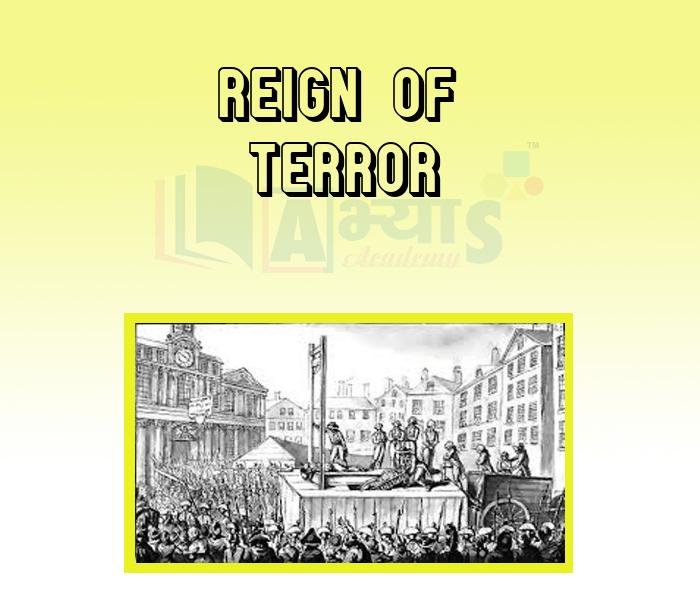Reign of Terror













Reign of Terror
The Reign of Terror: The period from 1793 to 1794 is referred to as the ‘Reign of Terror’ in France. Robespierre followed a policy of severe control and punishment. Many people were arrested and tried by a revolutionary tribunal (court). They included all those people who were considered enemies (including ex-nobles, clergy and members of political parties) of republic by Robespierre.
A Directory Rules France: After the fall of the Jacobins, the wealthier middle classes seized power. A new Constitution was introduced which denied the vote to non-propertied society. It provided for two elected legislative councils.
These councils appointed a Directory, an Executive made up of five members. It was meant as a safeguard against the concentration of power in a one man executive. Often the Directors clashed with the legislative councils and were dismissed.
This political, instability paved the way for the rise of Napoleon Bonaparte. The ideals of freedom, equality and fraternity remained inspiring ideals that motivated political movements for France and the rest of the Europe.
Which period is referred to as the Reign of Terror? | |||
| Right Option : B | |||
| View Explanation | |||
A guillotine was__________________ | |||
| Right Option : A | |||
| View Explanation |
______________ period is referred to as the ‘Reign of Terror’ in France. | |||
| Right Option : A | |||
| View Explanation | |||
Students / Parents Reviews [10]
Abhyas is a complete education Institute. Here extreme care is taken by teacher with the help of regular exam. Extra classes also conducted by the institute, if the student is weak.

Om Umang
10thMy experience with Abhyas academy is very good. I did not think that my every subject coming here will be so strong. The main thing is that the online tests had made me learn here more things.

Hiya Gupta
8thAbhyas Methodology is very good. It is based on according to student and each child manages accordingly to its properly. Methodology has improved the abilities of students to shine them in future.

Manish Kumar
10thMy experience was very good with Abhyas academy. I am studying here from 6th class and I am satisfied by its results in my life. I improved a lot here ahead of school syllabus.

Ayan Ghosh
8thIt has a great methodology. Students here can get analysis to their test quickly.We can learn easily through PPTs and the testing methods are good. We know that where we have to practice

Barkha Arora
10thI have spent a wonderful time in Abhyas academy. It has made my reasoning more apt, English more stronger and Maths an interesting subject for me. It has given me a habbit of self studying

Yatharthi Sharma
10thOne of the best institutes to develope a child interest in studies.Provides SST and English knowledge also unlike other institutes. Teachers are co operative and friendly online tests andPPT develope practical knowledge also.

Aman Kumar Shrivastava
10thIt was a good experience with Abhyas Academy. I even faced problems in starting but slowly and steadily overcomed. Especially reasoning classes helped me a lot.

Cheshta
10thA marvelous experience with Abhyas. I am glad to share that my ward has achieved more than enough at the Ambala ABHYAS centre. Years have passed on and more and more he has gained. May the centre flourish and develop day by day by the grace of God.

Archit Segal
7thIt was good as the experience because as we had come here we had been improved in a such envirnment created here.Extra is taught which is beneficial for future.
